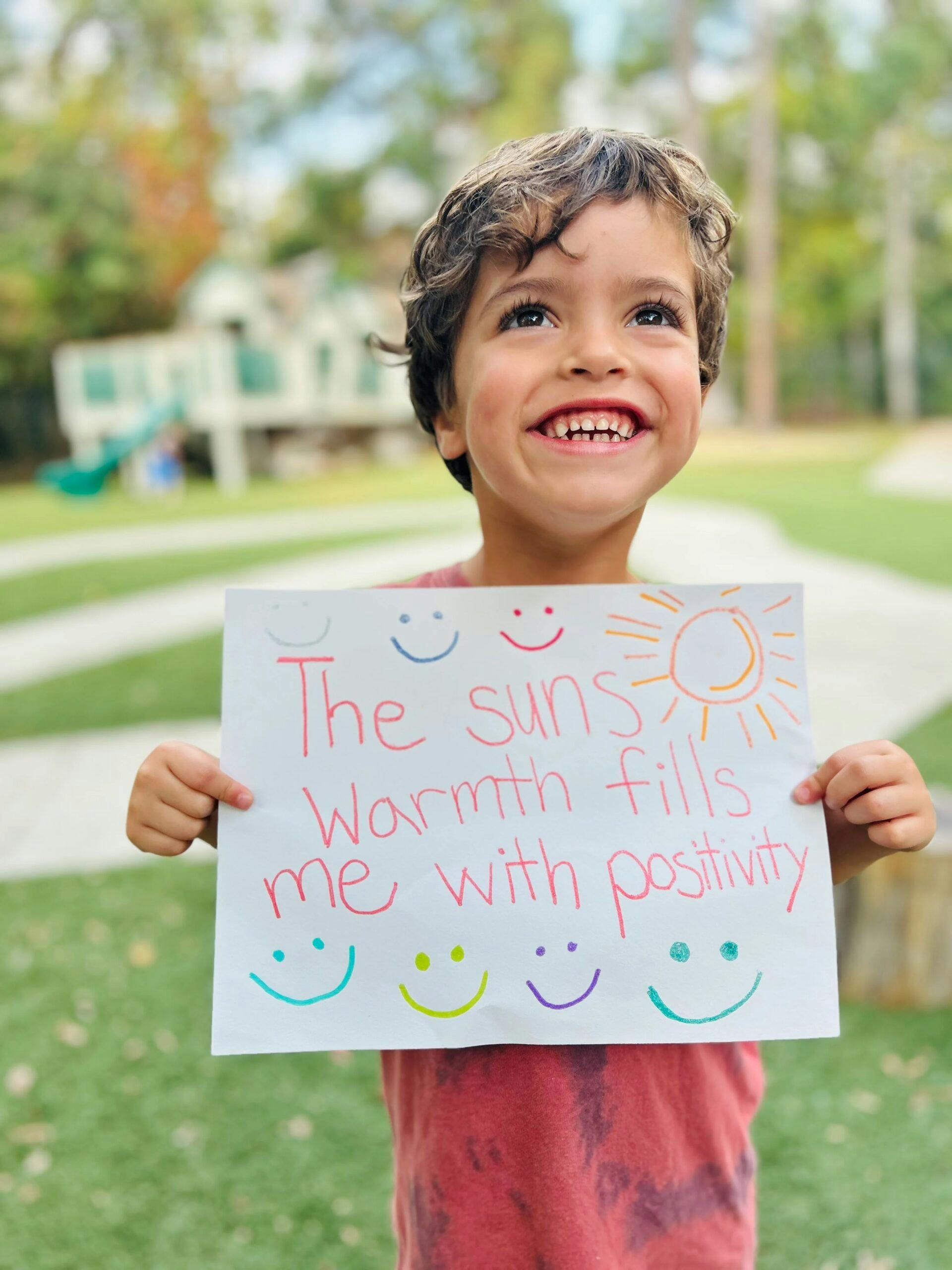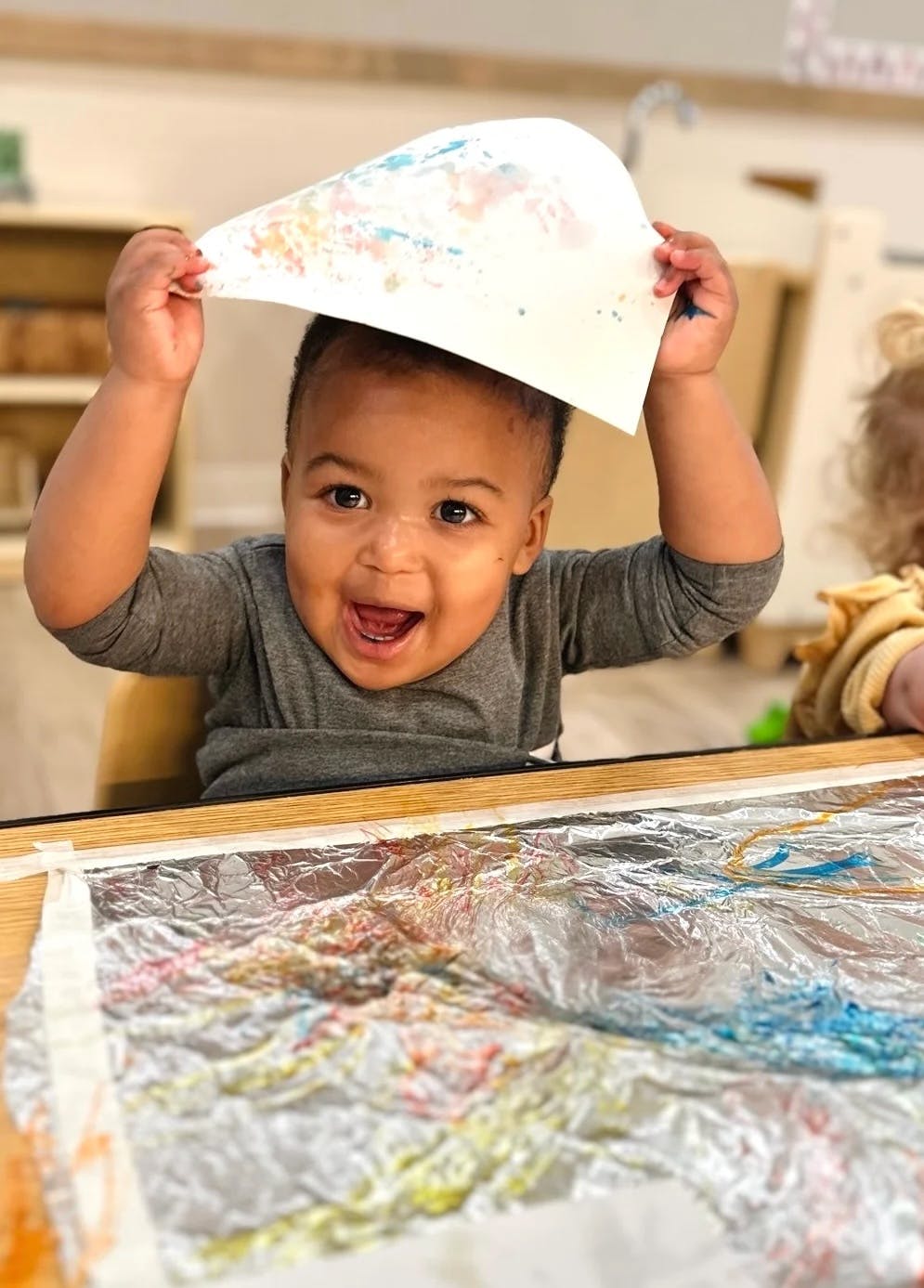
November 17, 2025
Family Traditions That Teach Gratitude
As Thanksgiving approaches, families everywhere are preparing to gather, share a meal, and reflect on the things they’re most thankful for. But for preschool-age children, understanding the meaning of gratitude goes far beyond simply saying “thank you.” It’s about helping them notice kindness, appreciate experiences, and develop empathy for others, all skills that begin to take root in early childhood.
Thanksgiving is a perfect time to start nurturing those values through family traditions and gratitude activities for kids that are meaningful, fun, and developmentally appropriate.
Why Gratitude Matters in Early Childhood
Gratitude is more than good manners. It’s a mindset that shapes how children see the world. When little ones practice noticing and expressing thanks, they’re building empathy, resilience, and social awareness. Studies in early childhood education show that children who regularly engage in gratitude-based practices often show higher levels of happiness, better emotional regulation, and stronger connections with others.
For preschoolers, gratitude begins with small, tangible moments: a friend sharing a toy, a teacher giving them a hug, or a family member helping them zip a jacket. By spotlighting these experiences through Thanksgiving traditions, families can help children recognize how kindness feels, both in giving and receiving.
Building Gratitude into Thanksgiving Traditions
Thanksgiving naturally lends itself to reflection and togetherness. By turning small acts into repeatable rituals, parents can create lasting family traditions that celebrate gratitude year after year.
Here are a few simple and meaningful ideas:
- The Thankful Tree
Cut out a few paper leaves and invite each family member to write or draw something they’re grateful for. Preschoolers can illustrate their ideas: a favorite snack, a pet, or a special friend. Hang the leaves on branches placed in a vase to create a “Thankful Tree.” This visual reminder helps children see how gratitude grows when shared.
- Family Storytime of Thanks
Incorporate gratitude into your bedtime routine by sharing stories about thankfulness. Books like Bear Says Thanks by Karma Wilson or The Thankful Book by Todd Parr open the door to conversations about kindness and appreciation. Encourage your child to share one thing they’re thankful for after each story, making it a nightly gratitude ritual, not just a holiday activity.
- The Giving Plate
Create a simple family Thanksgiving tradition with a “giving plate.” Decorate a plate together (even with paper or cardboard) and fill it with treats for a neighbor, teacher, or friend. Explain to your child that when you share something special, you make someone else feel happy, and that’s what gratitude looks like in action.
- Gratitude Walks
Go for a short family walk and point out things that make you feel thankful: the sunshine, colorful leaves, or a kind neighbor waving hello. Encourage your child to share what they notice, helping them link gratitude to everyday experiences.
- The Family Gratitude Jar
Keep a small jar in a visible place at home and invite everyone to add notes of gratitude throughout the week. During Thanksgiving dinner (or any family meal), take turns pulling out a few and reading them aloud. Preschoolers love hearing their notes read back. It reinforces that their thoughts and feelings matter.
Gratitude Activities for Kids to Try at Home
Preschoolers learn best through play, creativity, and connection. These gratitude activities for kids are easy for families to do together, turning simple moments into learning experiences:
- Make a “Kindness Chain”
Cut strips of colorful paper, and each time your child does or notices something kind, write it down and tape the ends to form a paper chain. Over the month of November, your chain will grow longer, a beautiful visual of how kindness connects us all.
- Create Thank-You Cards
Invite your child to make thank-you cards for family members, friends, or teachers. Encourage them to draw pictures instead of writing if they’re still learning letters. Delivering the cards in person adds an extra layer of joy and confidence for little ones.
- Gratitude Art Collage
Gather magazines, photos, or nature items like leaves and flowers. Help your child glue these onto a piece of paper while talking about why each item is meaningful. This sensory project encourages reflection and self-expression: two key parts of emotional growth.
- “Thank You” Songs and Rhymes
Music is a powerful way for preschoolers to internalize concepts. Make up a simple gratitude song together! For example:
“Thank you, thank you, every day, for the friends I meet and the games we play!”
Singing about gratitude turns the abstract into something joyful and memorable.
- Acts of Kindness Challenge
Help your child brainstorm small ways to show appreciation, like feeding the family pet, sharing a toy, or helping set the table. Create a “kindness chart” and celebrate each act together. This practice reinforces that gratitude isn’t just a feeling. It’s something we show through actions.
The Reggio Emilia Connection: Gratitude Through Reflection
In Reggio Emilia-inspired classrooms like those at Little Sunshine’s Playhouse, gratitude is often explored through reflection and community connection. Children are encouraged to notice the beauty in their environment, appreciate the contributions of others, and express thankfulness through art, play, and storytelling.
When teachers and parents model appreciation—saying thank you, acknowledging children’s efforts, and celebrating collaboration—young learners begin to internalize those values. Gratitude, after all, grows through modeling and shared experience.
Families can take a similar approach at home by creating opportunities for open dialogue. Ask reflective questions like:
- “What made you smile today?”
- “Who helped you this week?”
- “How can we make someone else feel happy tomorrow?”
These conversations help children connect gratitude with empathy, compassion, and community, values that last long after Thanksgiving.
Creating Traditions That Shine
Every family’s Thanksgiving celebration looks a little different, and that’s what makes traditions so special. Whether you gather around a big table or enjoy a cozy picnic, the moments you create together teach your child about belonging, appreciation, and love.
When children see that gratitude is a shared family value—not just something we talk about once a year—they begin to live it in their own small ways. From offering a hug to saying “thank you” without being prompted, these habits build a lifelong foundation for kindness and connection.
So this season, lean into the simple joys.
Celebrate with laughter, stories, and a few new Thanksgiving traditions that make gratitude shine all year long.
Final Thought
Thanksgiving isn’t just a holiday. It’s an opportunity to slow down and help children see the beauty in giving, receiving, and being together. Through intentional gratitude activities for kids and meaningful family rituals, parents can plant the seeds of thankfulness that will grow through every season of life.
We’d like to thank our beautiful readers and families for making our Little Sunshine’s community so special! Keep reading here!


